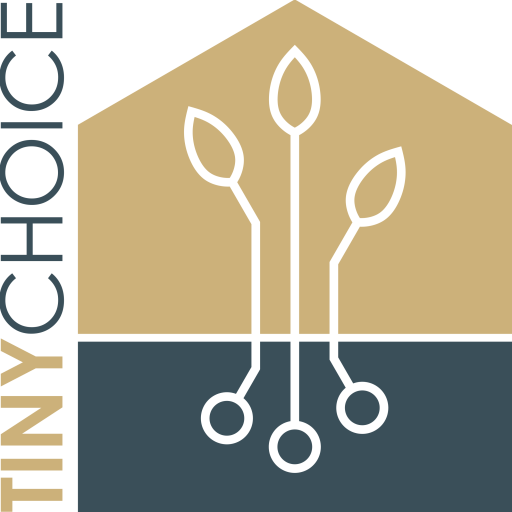Sustainability

The times where Mother Earth was endlessly rich with resources have long gone, and now we need to consume less and live wiser. Tiny houses – small, sustainable homes – are already a megatrend in the USA, and Europe is getting there. Therefore, we have founded Tiny Choice ApS in order to build and deliver minimalistic and climate friendly high-quality homes – affordable for all.
Tiny Choices endeavours to use materials produced as close to our factory as possible without compromising the quality. Thus, we shorten the time spent on the road, which reduces the overall CO2-level on every tiny house. At the same time, we stay in close contact with our suppliers and are continually updated about the latest development of the products.
Today, the Danes consume our country’s resources four times faster than the level of resources actually can manage. Our mission is to turn overspending into underusing and build 4:1, i.e. quartering our usage of resources compared to ordinary house building.
As far as it goes, a tiny house from Tiny Choice is built from biogenic materials. Paper wool, wood fibre wool, CLT, bamboo, straw, hemp, and linoleum are all recycled or recyclable biogenic products, which stem from nature and pollute less than traditional buildings. Our tiny houses are made from CLT and insulated with biobased materials. With ordinary maintenance, our tiny houses are built to last for 50 years. Ordinary houses are often made from climate affecting materials as glazed tiles, concrete, steel, and mineral wool.
Our mission is not just another outlet of fancy words. When we are ready, we will document our production on this website. Below, you can read more about the materials we use. A tiny house from Tiny Choice must be a nice place to be, and that goes for the rest of the world as well.
Sustainable targets
Tiny Choice meets the environmental targets for sustainable building – and so much more. In Denmark, a standard family home is 140 m². However, in 2022 new houses had an average size of 213 m². A tiny house from Tiny Choice is from 28 to 75 m².
| Tiny Choice | |
| Biogenic materials | At least 92 % |
| Annual CO2.outlet per m2 incl. building | Max. 3.5 kg |
| Maintenance costs | Less than DKK 4,000 |
CLT
All tiny houses from Tiny Choice are made from wood, and CLT is one of the most sustainable wood products. CLT stands for Cross Laminated Timber. It has 3-7 layers placed perpendicularly upon one another; connected with an organic glue which strengthens the durability.
By using CLT we use up to 70 % of the actual wood mass of the tree, which is significantly more than when using other massive wood products. CLT was invented in Graz in Austria in 1996. The large elements can be delivered and cut so precisely that the building tolerance is down to 1-2 mm, which is more precise than with any other materials.


Biobased insulation
A tiny house from Tiny Choice is insulated with Cellulose Based Insulation (CBI). It is a recycled material made from either old newspapers (paper wool) or wooden fibres (wood fibre old). The great advantage of using CBI is that the cavities of the fibres insulate the building, and the fibres have an amazing ability to transport and move moisture, thus letting the house breathe. Therefore, the insulation is hygrophobic.
Tiny Choice do not use plastic or other non-biologic artificial membranes when securing the humidity and temperature levels. Since the entire construction is wood based, the house is able to breath and keep a stable temperature all year around.
The density of the insulation is so high that it remains unaffected by transport. At the same time, the CBI is an efficient silencer. An insulation that breathes secures a healthy indoor climate, both regarding temperature and noise but also regarding moisture and condensation. A house from Tiny Choice never accumulates moisture or condensed water, which it is unable to get rid of.
CBI has been known since the 1890ies and is particularly used in the USA, where wooden houses are more common than in Denmark, but times are changing, and this type of insulation is becoming increasingly popular in Europe. Partly because it is easy to use, partly because we now are so experienced in using it, that it is completely safe. Therefore, we use this old and thoroughly assessed sustainable material.


